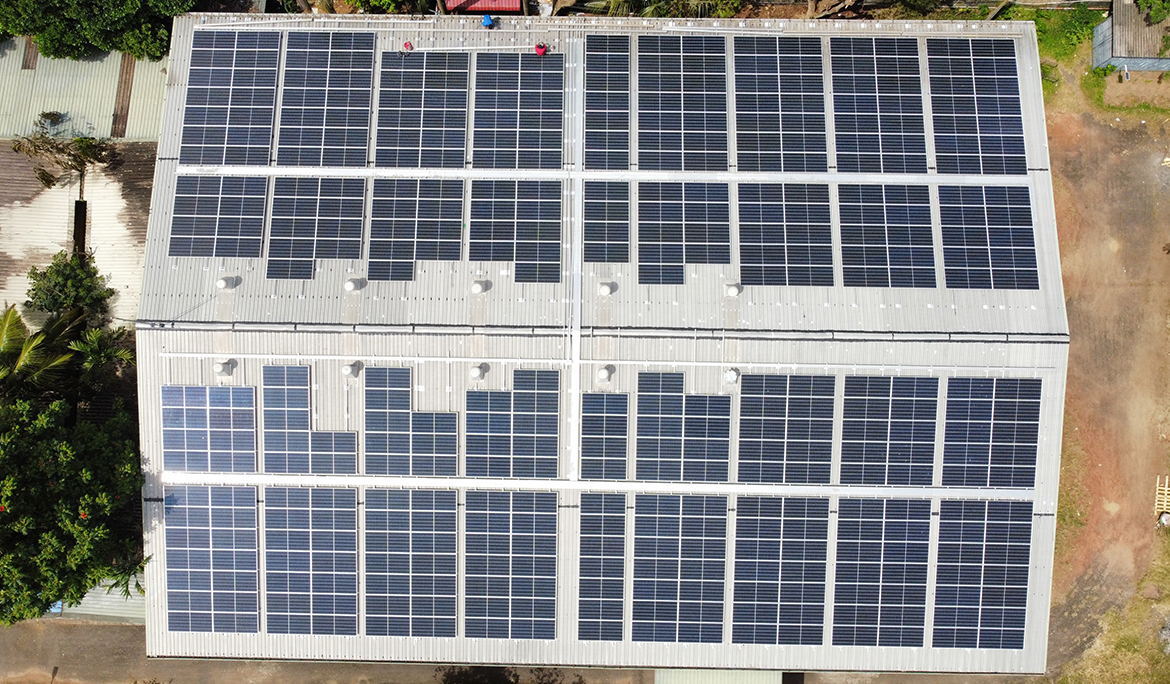Why Proper Spacing of Solar Panels Matters for Optimal System Performance
Solar Panels operate on the Photo Voltaic Effect by capturing sunlight and converting it to electricity. Installation of solar panels is a challenging affair but only a few solar system service providers consider how the spacing between panels influences system performance and power output. There is always a temptation from several solar system service providers to accommodate as many solar panels as possible to increase the system capacity. But it is not recommended since solar panels are designed to operate under specific conditions. Let’s see how spacing between solar modules and arrays can affect a solar system performance in detail.

Like any other material, solar panel frame and glass are prone to contractions and expansions due to the temperature effect over time. However, they are not designed to be placed in a compact manner. This tolerance due to contractions and expansions should be considered while placing panels on a roof. Solar warranties cannot be claimed if they are placed quite close to each other by the solar installation company. The customer will have to face severe issues in terms of claiming warranties when panels are over stacked and improperly placed closed to each other.
Solar Panels do not perform well when exposed to higher temperatures contrary to popular myth among the majority. The heat of sunlight is not used for electricity conversion but the sunlight or solar irradiance is converted to electricity by solar panels. In fact, solar panel efficiency can slightly drop when they are exposed to high temperatures. Researchers have found out that the maximum power output of a solar panel can drop by 0.3% to 0.5% per degree increase in module temperature. This reduction in system performance can be significant if panels are stacked too close to each other allowing them to rise in temperature. However , if the panels are placed with the recommended spacing , convection currents can help reduce the solar panels rising to high temperatures. This is simply the movement of air flow between solar panels and the roof , which only occurs when there is an ideal gap between them. It is nature’s way of preventing the panels reaching higher temperatures when ideally installed according to the standards and proper spacing. Therefore, it is important to ensure a considerable separation between solar panel modules and arrays to allow greater air flow and prevent the modules from reaching higher temperatures.
While it is true that larger gaps between solar modules and arrays can result in a decrease in the system capacity that a roof can accommodate, as well as an increase in the cost of the system due to the need for more wiring. But several studies have indicated that the potential benefits of using recommended gaps outweigh the costs when it comes to performance and power output.
It is important to strike a balance between gap size and system capacity to increase the benefits of the solar system during installation. Sino Lanka Power Gen places a high priority on addressing this issue in all the installations carried out. We maintain a 10mm horizontal gap between two panels and 20mm vertical gap between two panels while maintaining a 360 mm gap between two walkways adhering to optimum design and industrial safety standards. By following these standards, we are quite capable of minimizing the risk of overheating solar panels and ensure they perform optimally over time. Considering this during installations can help maximize the long-term benefits of solar energy including increased efficiency and cost savings to the customer.





